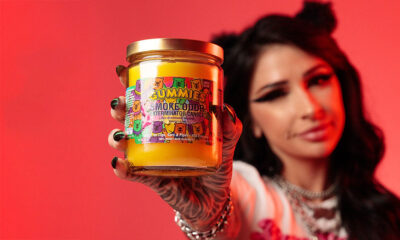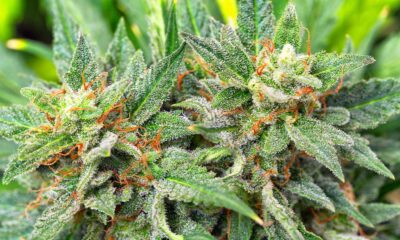
Joint Opinions
Patients Ought To Be Skeptical Of Proposed CBD-Only Legislation — Here’s Why
State lawmakers who have steadfastly opposed the legalization of medical marijuana are suddenly singing the praises of cannabidiol. What gives?
Lawmakers in a growing number of states, including Alabama, Florida, Georgia, Utah, and Wisconsin, are saying no to medical cannabis but yes to cannabidiol, a naturally occurring compound in the plant. But is this new direction in the best interest of patients?
Cannabidiol, also known as CBD, is one of an estimated 100 unique, biologically active compounds present in the marijuana plant. First discovered in 1940 (though its specific chemical structure was not identified until 1963), CBD is the most studied cannabinoid after delta-9-THC.
Like THC, the compound acts on the endogenous cannabinoid system to stimulate a variety of potentially beneficial therapeutic effects. (Some of these more notable effects include anti-anxiety, anti-convulsant, anti-inflammatory, and anti-cancer activities.) Unlike THC, cannabidiol is not psychoactive. Therefore, it does not trigger the so-called marijuana high. In fact, studies show that CBD tempers THC’s psychoactivity.
It is this latter effect that has gotten the attention of lawmakers, many of whom have steadfastly opposed any liberalization of medical marijuana access but are now pushing to legalize strains of cannabis and extracts high in CBD content. Even career prohibitionists, like Project SAM’s Kevin Sabet, have begun to acknowledge CBD’s therapeutic qualities while continuing to dismiss the notion that the plant itself possesses any therapeutic value. But is sacrificing the whole plant in lieu of a single compound—even one as promising as CBD—an ideal alternative for patients? Not by a long shot. Here’s why.
Despite compelling anecdotal reports of young children successfully using CBD to offset symptoms of otherwise intractable pediatric epilepsy such as Dravet Syndrome, no controlled clinical studies have been concluded as of yet documenting the compound’s efficacy for this condition in this specific patient population. There are, however, a limited number of controlled trials performed assessing the use of CBD in adults with more conventional forms of the disease. Specifically, a pair of controlled trials published in 1980 reported the substance possesses some moderate effectiveness as an anti-convulsant. But those studies involved only 16 total subjects, and no additional controlled trials have replicated these preliminary findings.
This is because cannabidiol is classified as a Schedule I substance, making it exceedingly difficult for researchers to study in controlled clinical settings. As a result, most of the nearly 1,200 papers available on CBD focus on the substance’s effects in animals or in a petri-dish. As for the handful of human trials assessing CBD in isolation, these are primarily studies of the compound’s safety, not efficacy. (Two notable exceptions are a 2012 German study, which found CBD administration limited psychotic episodes in patients with acute schizophrenia on par with the drug amisulpride, but possessed a markedly superior side-effect profile, and a 2011 Brazilian study reporting that CBD reduces anxiety in subjects with social anxiety disorder.)
By comparison, there is a far greater pool of controlled clinical studies documenting the efficacy of either whole plant marijuana and/or THC. A 2012 review of a series of recently conducted trials by the University of California to evaluate the effectiveness of whole smoked marijuana in hundreds of patients concluded that sufficient clinical research has now been performed to validate the plant’s therapeutic efficacy. “Based on evidence currently available the Schedule I classification is not tenable,” the authors determined. “It is not accurate that cannabis has no medical value.”
Could investigators draw a similar conclusion acknowledging the medical value of CBD alone? It’s possible they could, but far from certain. That is because at this time the compound’s therapeutic efficacy has yet to be consistently documented in controlled clinical settings involving a significant number of people—a situation that exists largely because, until now, clinical researchers have been uninterested in studying its effects in humans and the federal government has made it cumbersome to conduct such studies.
Further, patients have long proclaimed that whole plant cannabis is preferable to its isolated components, such as THC (which is available by prescription in synthetic form as the FDA-approved drug Marinol). Scientific evidence is beginning to confirm their assumption, finding that various naturally occurring cannabinoids and terpenoids (organic plant compounds that possess aromatic qualities) work synergistically with one another to achieve maximum health benefits.
According to a 2011 literature review published in the British Journal of Pharmacology, several studies now lend credence to the so-called entourage effect of whole-plant cannabis. “Considered ensemble,” the paper concludes, “the preceding body of information supports the concept that selective breeding of cannabis chemotypes rich in ameliorative phytocannabinoid and terpenoid content offer complementary pharmacological activities that may strengthen and broaden clinical applications and improve the therapeutic index of cannabis extracts containing THC, or other base phytocannabinoids.”
CNN commentator and neurosurgeon Sanjay Gupta, who provided national attention to the potential prowess of CBD in a widely watched television documentary which aired last year, recently drew a similar conclusion. In an interview with BusinessInsider.com, Gupta affirmed that various cannabinoids in the plant, including THC and CBD, “work in concert with one another.” He concluded, “Just taking CBD out and using it alone doesn’t seem to work as well as when it is with all the other compounds.” Presently, the only regulated pharmaceutical product containing CBD available anywhere in the world, Sativex, contains not cannabidiol in isolation, but nearly equal ratios of THC and CBD along with other natural components of the cannabis plant.
If the plant ain’t broke, why fix it?
For longtime marijuana law reformers, the ongoing political conversation surrounding CBD is instructive. It makes it clear that many politicians’ public opposition to the idea of patients using marijuana therapeutically isn’t because of supposed unanswered questions surrounding the plant’s safety or efficacy. Rather, it is because lawmakers oppose the idea of some people getting high from a naturally growing herb. (The fact that patients can get equally high or even higher from FDA-approved synthetic THC has, for whatever reason, never been an expressed concern of either lawmakers or prohibitionists.) After all, the very same politicians who argue that marijuana isn’t medicine because it hasn’t been approved by the FDA or who allege that the substance hasn’t yet been subjected to sufficient scientific scrutiny utter no such public objections to the idea of legalizing patient access to CBD – a schedule I compound that hasn’t been reviewed, much less approved by the FDA, and that has been clinically studied far less than cannabis.
Perhaps most ironically is that were it not for the advent of legalized whole plant marijuana, a policy change publicly opposed by many present day CBD-only political advocates, lawmakers (and anti-pot groups like SAM) today wouldn’t be aware of CBD, much less advocating for it. The reality is that it was the stakeholders in medical marijuana states, and those who provide for them, who have done the most to explore and promote cannabidiol as a legitimate therapeutic agent. And they were able to do so because they, unlike most federally licensed medical researchers, had access to the whole plant.
We’ve been down this road before. Not long ago, lawmakers and anti-marijuana zealots were dismissing patients’ desire to access the marijuana plant because they alleged that the THC-pill Marinol could adequately meet patients’ needs. Patients and their advocates were skeptical of lawmakers’ claims then, and properly so. Now many of these same politicians are once again dismissing patients’ calls for whole plant medicine by claiming that products and strains containing CBD alone only will suffice. Patients and their advocates ought to be equally skeptical once again.
Ultimately, patients should not be unnecessarily forced to decide between either accessing the whole plant or its isolated components. They should have safe, legal access to both, and politicians, even well-intentioned ones, should not restrict patients’ right to choose the most suitable option.
Reposted with permission from Alternet.
Have you used CBD products before? Tell our editor about it here: surveymonkey.com/s/QTXSRH6

























